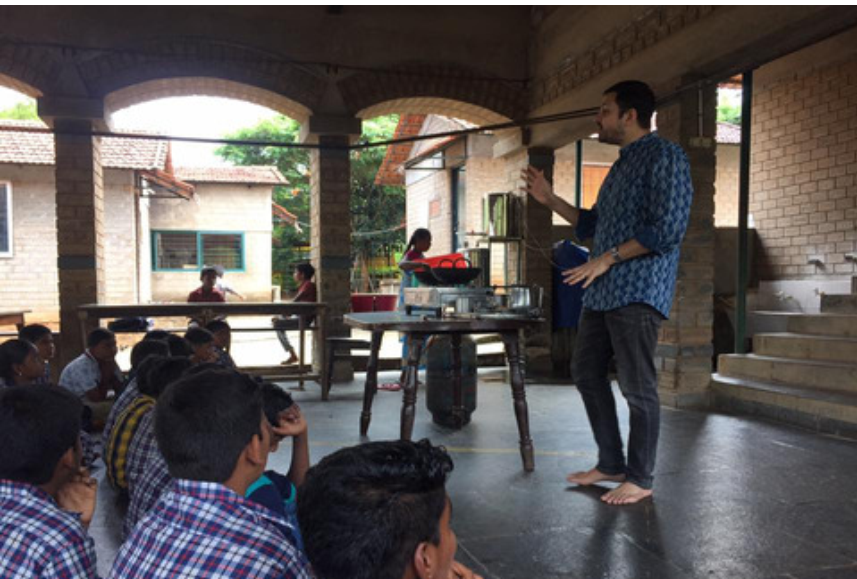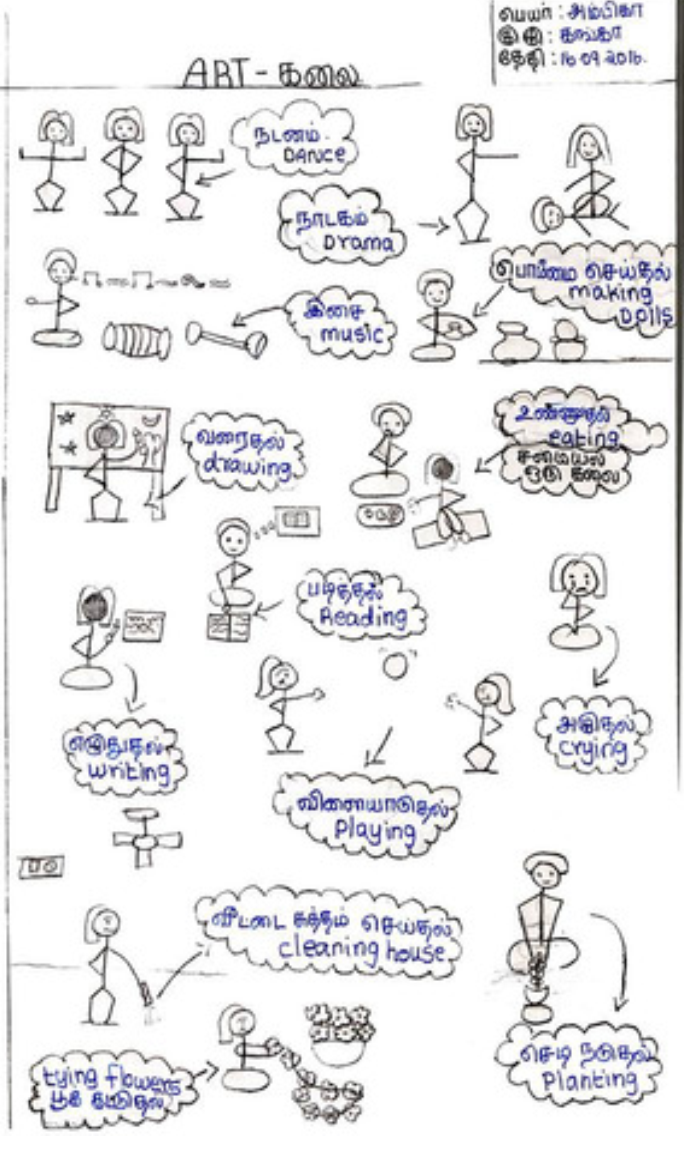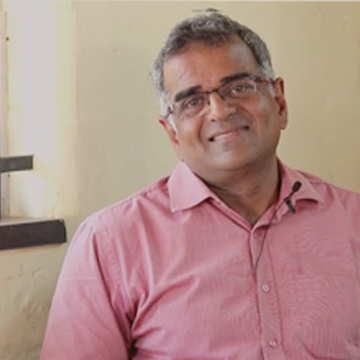
Motivation for establishing the school
Our school is located in Anaikatti in the foothills of Nilgiris, 50 km away from Coimbatore. My mother was supporting a few educational initiatives in this area in the year 2003. In the course of this work, the community asked her to set up a school where the children could learn English and receive the same high standards of education as city schools. However, they couldn’t afford that kind of education. With the help of a few members of the family, we set up the Bhuvana Foundation. Vidya Vanam was started in 2007 to cater to the needs of the Irula community. Even today, 55% of our students come from the Irula community, the remaining come from other underprivileged communities.

An education to develop the mind - interdisciplinary learning
We are focused on theme based and interdisciplinary learning. We don’t have fixed classrooms for middle school (Classes 4 to 7). There are classrooms that have been converted to “zones” – Tamil, English, math, science and social science. Teachers stay in their respective zones and students move from one room to another. These zones have images and artefacts with which students can interact and assimilate information. This also helps us break the hierarchy of grades. For example, a child in Class 6 might be intrigued by a model on the Archimedes principle and start asking questions. In such a scenario, the teacher helps the child learn about the topics even if they are not strictly part of the curriculum in that grade.

Teachers are also encouraged to go beyond the prescribed textbooks. They look at a lot of information from different sources when they are teaching a topic. The textbook is treated as an aid, not the primary source of teaching. We also offer a wide variety of learning opportunities. Students learn Carnatic music, dance, automobile design, data analytics. We have set up an automobile “shed”, a food production “shed”, and an art department equipped with the necessary facilities for students pursuing these subjects.
We also believe in integrated teaching of disciplines. In reality, knowledge is integrated, however, we split it into “subjects” such as biology, math, social sciences and language for our convenience. For instance, in the story, “Musgrave Ritual”, Sherlock Holmes solves the mystery of a hidden treasure using geometry. Similarly, many Hercule Poirot stories have references to arsenic poisoning. When children read such stories, it gives rise to many questions that are related to science which make the class more interesting. For example, questions such as “what is arsenic?”, “why is it poisonous?”, “why can’t you taste it when you mix it in a cup of coffee?” can be used to engage children when you are teaching them about the periodic table.
The role of art in developing an understanding of society
Art is a very important connecting factor for a lot of work done in the school. Children are taught using songs. There is a lot of drawing integrated with the teaching of subjects. Children here are extremely creative. Give them a pen and paper and they create mind boggling stuff. All our art teachers are from Shantiniketan, so children learn Rabindra Sangeet. They also learn Carnatic music, Irula music and Bharatnatayam. They are exposed to a lot of genres of art.
Our annual days are very different. On one occasion, we had students perform “Merchant of Venice” in English. They also performed a story about Kannagi from the Tamil epic Silappadikaram. In the Irula folklore, there is a reference to an encounter between Kannagi and the Irula community on her return from Madurai. She is said to have narrated her story to the local population before disappearing into the sky. The students enacted this incident in the Irula dialect. Through such activities we deliberately attempt to demonstrate that while children here learn English to keep abreast with the world outside, they can also keep alive their connection with their own language and culture.

The school also hosts ‘svanubhava’, an initiative by musician TM Krishna to take the performing arts to the masses — students get to watch Yakshagaana from Karnataka, Koodiyattam, dance and music of the Manipuris, the Todas and Badagas from the Nilgiris, and the songs of the Jogappas (a transgender community) from Karnataka. Children from other schools in and around Coimbatore also participate in this two-day event. This rich exposure helps children understand the diversity of our culture and the need to appreciate all forms of art, and to respect different cultures and ways of life.
Wider social responsibility of a school
We need to be cognizant of the wider social responsibility we have as a school. The broader society is moving towards greater urbanization and industrialization. That has led to a lot of migration here as well. Farmers have sold their land to brick kilns because farming is not very remunerative. They are working as landless laborers on their own farms now. The sudden inflow of cash because of land sale has led to other problems like alcoholism and domestic violence. Naturally, children don’t want to stay here. They are aspiring for jobs in the city. There are many children who go out of the community and don’t want to acknowledge their roots. That is resulting in a loss of a lot of indigenous knowledge and practices.
We cannot stop children from aspiring to be engineers and doctors and taking up jobs in the city. This is a larger process that is unfolding in society and we cannot stop it as a school. We also realize that jobs and careers in the hills are limited. But there are certain things we can do. We encourage children to use their language, learn from their environment, understand their customs and traditional knowledge. We also try to help students understand how some of the traditional farming practices are more sustainable and need to be encouraged. One of our important priorities as a school is to help children broaden their horizons but also stay connected with their roots. We can also hope that at least some of them will choose to come back after a few years and improve local agriculture and economy.
